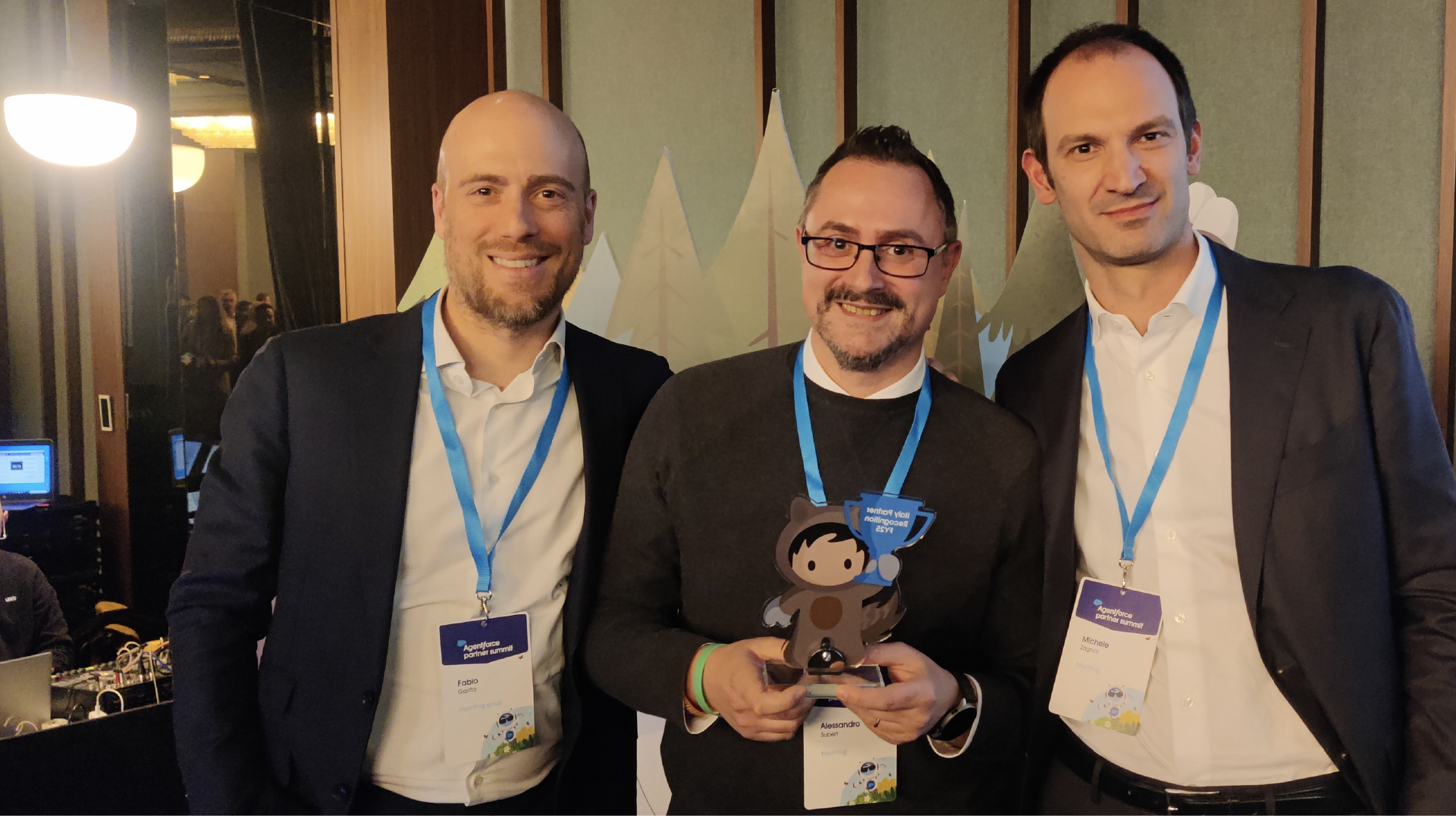Corporate training is business transformation
Corporate training is evolving with AI: new models, methodologies, and technologies are transforming the way companies and employees approach change. A strategic resource for growth, innovation, and enhancing human capital.

In today’s context, corporate training is undergoing a profound transformation. The spread of Artificial Intelligence (AI) is reshaping the landscape of required skills, impacting processes, roles, and strategies. According to the Artificial Intelligence Observatory of the Politecnico di Milano, in 2024 the AI market in Italy reached a value of €1.2 billion, growing by 58% compared to the previous year. But technology alone is not enough: a Red Hat survey reveals that 80% of Italian IT leaders see the lack of qualified professionals as one of the main barriers to effective AI adoption.
This scenario demands a dual effort from companies: on one hand, promoting internal AI training programs accessible at all organizational levels; on the other, helping employees get used to working alongside new digital tools like AI Agents, true virtual colleagues. In this way, corporate training becomes a lever for integrating innovation with organizational culture.
Corporate training today: beyond technical skills
As stated by H. James Wilson and Paul R. Daugherty in their analysis published in the Harvard Business Review (Jan–Feb 2025), “Strong leaders put business transformation in the hands of all employees.” Corporate training is therefore no longer a peripheral activity, but a driver of structural change.
Digitalization, automation, and the spread of AI are revolutionizing operational dynamics and market expectations. Continuous training plays a strategic role: it enables workers to stay up to date, redefine their roles, and face change with confidence. For companies, it becomes an essential tool to ensure organizational agility, operational resilience, and long-term competitiveness.
Moreover, modern corporate training goes beyond the transfer of technical skills. It includes soft skills, critical thinking, problem-solving, and adaptability. These transversal competencies are essential for navigating an increasingly complex and ever-changing environment.
AI training in key business sectors
The AI revolution is transforming numerous sectors, making targeted corporate training programs essential. Reskilling (requalification) and upskilling (enhancement) of skills must be tailored to meet the specific needs of each area:
- CRM and Customer Experience: AI training enables understanding of predictive tools, intelligent automation, and advanced behavioral analytics, improving customer relationships.
- ERP and Operations: AI enhances planning, supply chain management, and cost analysis. Targeted training prepares staff to use these technologies effectively.
- IT Development: developers require ongoing training in machine learning, low-code platforms, and generative AI tools.
- Creative Fields: AI opens new possibilities for automatically generating content, graphics, and video. Digital training here focuses on integrating human creativity with artificial intelligence.
An article from del Sole 24 Ore (March 2025) highlights how the mismatch between required and available skills is one of the main challenges facing Italian companies. The solution? Continuous, flexible, and strategic corporate training.
Innovative methodologies for corporate training with AI
Artificial intelligence doesn’t just influence the content of corporate training, it revolutionizes the methods. AI-powered LMS (Learning Management Systems) offer personalized experiences, adjust the difficulty of training modules, and provide real-time feedback.
Today, there is increasing talk about:
- Blended learning, which combines in-person and online training.
- Adaptive learning, which adjusts content based on individual progress.
- Microlearning, which breaks down knowledge into quick, effective bursts.
According to Seidor (2025), the use of simulations, augmented reality, and interactive chatbots has made corporate training more engaging and focused on experiential learning. This approach makes it possible to reach all corporate levels, from junior roles to managers.
Designing an Effective Corporate Training Plan
To be truly useful, corporate training must be an integral part of the overall business strategy. As Enrico Sassoon notes in HBR Italia, the introduction of AI only makes sense if accompanied by continuous investment in human capital.
A solid corporate training plan includes:
- Analysis of training needs.
- Definition of specific and measurable objectives.
- Active involvement of management.
- Ongoing monitoring and updates.
The goal is not just to fill gaps, but to enhance internal potential, motivate talent, and prepare the organization for future challenges.
Ongoing Training at Mashfrog Group: A Virtuous Model
At Mashfrog Group, training the corporate community is a core asset. On one hand, the continuous evolution of technologies and platforms—even before the rise of AI, made it essential and routine for team members to regularly update their skills and earn certifications, from SAP to Salesforce, from Infor to Agile and Scrum methodologies. On the other hand, the GenAI revolution has driven the need to understand and experiment with various solutions across different fields,from creative tools like Midjourney or Runway to ICT at every stage of the Systems Development Life Cycle (SDLC).
Training, enhancing, or redefining one’s skills through reskilling programs is a common practice within the Group, involving both junior and senior professionals in different ways. This is demonstrated by the structured SAP and Salesforce Academies, particularly aimed at young talents starting their consulting careers in the ERP field, as well as by workshops for various professional families, such as CreActivity, which is targeted at graphic designers, video makers, and copywriters. There are also personalized learning paths designed to enhance individual talents and aptitudes, or to introduce them to vertical upgrade programs aligned with specific project needs.

